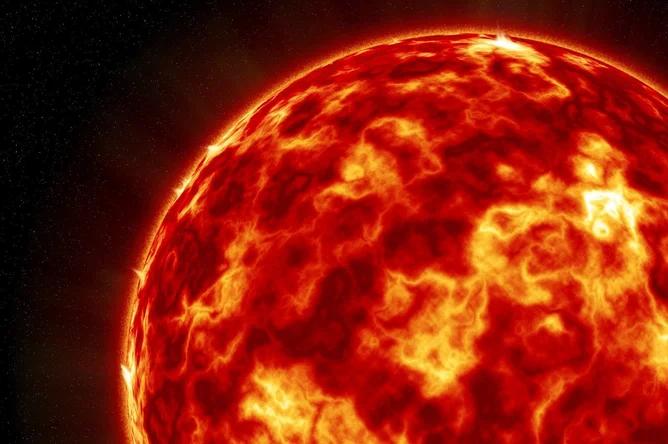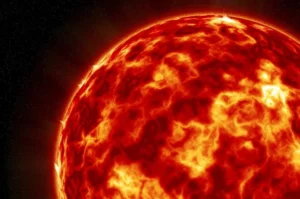“Aditya L1” is an important solar mission by India. Its goal is to study various characteristics of the Sun by getting close to it. Through this mission, India aims to understand the outer layer of the Sun called the “Chromosphere” and the dynamic nature of the solar corona.
The chromosphere is a kind of gaseous layer that surrounds the Sun. Studying it can help us learn about the outer parts of the Sun. It could improve weather forecasting and electricity generation.
Additionally, the “Aditya L1” mission also aims to study the dynamics of the solar corona. The corona is a layer of the Sun’s atmosphere. This layer extends a little far from its surface and releases heat into the solar atmosphere in various ways.
Understanding this can help us grasp changes in the Sun’s behavior and aid in producing artificial solar power more effectively. “Aditya L1” mission could assist in uncovering the mysteries of the Sun. It contribute to the exploration of new energy sources.
How it’s works ?
The layer just above the surface of the Sun, known as the photosphere, has a temperature of around 5500 degrees Celsius. At its core, where the Sun’s heat is strongest, the temperature can reach as high as 15 million degrees Celsius. Because of this extreme heat, it’s not possible for any spacecraft or object made by humans to go there.
This is why we place spacecraft at a safe distance from the Sun or make them pass by it without getting too close. The Indian Space Research Organization (ISRO) is launching the Aditya L1 mission on September 2, 2023, at 11:50 AM.
India is launching its first space-based observatory through this mission, and it will position the observatory far enough from the Sun. As a result, the instruments on the observatory are designed to handle the heat and avoid any damage.
In this way, the Aditya L1 mission is a clever technological solution that will allow us to study the relatively cooler surface of the Sun and understand various processes happening in the solar system.
What is L1 Point ?
L1, also known as Lagrange Point One. It is a special spot found between Earth and the Sun. It’s where the gravitational forces of both Earth and the Sun balance out equally, creating a sort of stable zone. Imagine Earth as a bus and the Sun as a truck; L1 is like a spot right between them.Where they stand balanced.
This unique point is useful for keeping things, like satellites or instruments, steadily in place. It’s kind of like finding a perfect spot between a bus and a truck. India has even placed a satellite there to always have a view towards the Sun, which we call L1 or Lagrange Point One.
“There’s a boundary where the gravity of both things meets, and a small object can stay there for a long time. This happens because the object gets stuck between the gravity of both things. This helps spacecraft use their engines less and work for many days.
Talking about Melbourne, it’s in between a straight line from the Sun to the Earth. This means it’s a part of the distance between the Sun and Earth. This distance is about 1,500,000 kilometers, while the distance from the Sun to Earth is about 150 million kilometers. there are five points related to this topic: L1, L2, L3, L4, and L5″.
You can understand missions like Aditya L1 in easy steps:
Sure, I can simplify the information for you:
Aditya-like top missions can be understood in easy steps:
- Mission Start: The journey begins from Aditya L1. A rocket, like the PSLV, will start from a lower orbit of Earth.
- Earth Orbit: The rocket will depart from Earth’s lower orbit and enter outer space, a region known as the sphere of influence.
- Manual Orbits: After that, the rocket will maneuver through three or four manual orbits to move away from Earth’s gravitational pull.
- Halo Orbit: The team will then place Aditya L1 in a Halo orbit, a special point between the Sun and Earth. This point is just 1% farther from the Sun than Earth’s distance.
- Distance and Time: Despite being at this point, it’s only a small distance away. This phase of the journey will take around 127 days.
- Challenges: The mission faces challenges, including going beyond Earth’s SOI in the first orbit and controlling the speed of the cruise stage in the Halo orbit Melburnian position.
- Conclusion: At the end, Aditya L1 will conclude this unique mission.
Starting from Sriharikota, the Aditya L1 mission will begin its journey. During this journey, it will stay about 14 crore 85 lakh kilometers away from Earth, close to the Sun. The total distance covered by this journey will be approximately 1,500,000 kilometers, which is almost 4 times the distance from Earth to the Moon. For this mission, a PSLV-XL rocket, designated as PSLV-C57, will be used. This mission aims to study the Sun and its surroundings from a significant distance.










Hello,
Exclusive Promo Quality mp3 for VIP DJ’s https://0daymusic.org/
320 TB MP3/FLAC, Label, LIVESETS, Music Videos.
Promo Music
Thank you for delivering fabulous content! Your blog is a valuable resource, and I appreciate the effort you put into creating such informative and engaging articles.
So please update articles consistently.
thank you @Mahesh for your valuable feedback. We are continously working on it to provide better content